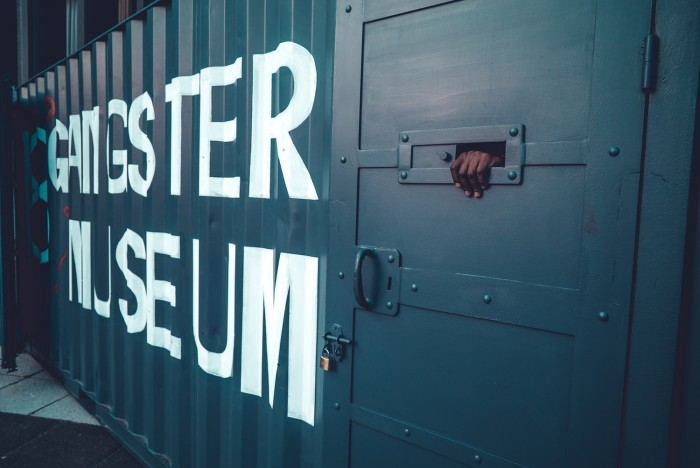
Gangsterism in South African townships is a common occurrence. Post-apartheid South Africa is riddled with poverty and unemployment, especially for the marginalised township youth, making them vulnerable to the practice. To try to break the chain in the township of Khayelitsha in Cape Town, Wandisile Nqeketho founded the 18 Gangster Museum. The aim of the museum is to raise awareness about gangsterism while slowing the rate at which gangs are increasing in communities. The museum also helps reintegrate ex-offenders into society.
We found out more about the initiative and how art can positively affect communities.
What inspired the 18 Gangster Museum?
What inspired 18 Gangster Museum was seeing how gangs were growing in the township and more young people were participating in gang activities without being cognisant of the atrocities that come when one chooses a life of gangs.
Gangsterism is often times glamourised or depicted in a very doomsday kind of way, what path has this museum chosen to come up with a new narrative?
We try to be as realistic about the subject as far as we can, and we are continuously working on new ways to approach the subject. For now, we are showing the atrocities that one finds when they partake in gangs. We also highlight the good that is taking place in the community for the young to see that there are positive alternatives to keep them away from a path of gangsterism.
Have you exhibited in areas most affected by issues of gangsterism, and if so, what was the response in those places?
We have exhibited in Makhaya, Khayelitsha for a month and a half. This is a community that is renowned for its production of vicious gangs in Khayelitsha. We had parents who brought their kids to come and learn at the museum. The reception was just phenomenal. We also engaged with former gangsters from the area and they also gave us a thumbs up, saying that we are doing a good job. These kinds of reactions from the public fuel us to continue what we are doing.
The setup and maintenance of this project must have required some decent investment? How were you able to fund it and to continue to sustain it?
To get us off the ground we received funds from the SAB Foundation, Red Bull Amaphiko Academy and Raymond Ackerman Academy of Entrepreneurial Development. Now we are using tourism as a source of revenue. We have adopted a business model called the one-for one-model, meaning that for every tourist that comes to the museum they are paying for one kid to come for free to the museum.
18 Gangster Museum is art that educates and raises awareness about a very serious issue in South Africa and Cape Town in particular, but beyond the awareness created by the exhibition, is there any other tangible results from it?
We found that many ex-offenders come together and have discussions at the museum to encourage each other in these hard times which we think is amazing. What is also amazing is the partnerships that are developing. We now have a partnership with Nicro and Emagqabini Educational Academy. This is proving that we are doing something that is needed in society.
Do you think this showcases how art can positively affect the communities within which they live?
Yes I do. Art plays a critical role in how we behave as a people. Art can be used for healing when society is found in a place of decay. Art plays an important role in our communities and this truly indicates the effectiveness of art in the places in which we reside.
Any plans for a permanent museum, and what would your ideal location be?
Most definitely. Owning a permanent museum is part of the plan. To get to that level we need to be creative and innovative in our approach and be able to impact as many people as we can in the process. We want the museum to be in Khayelitsha.
What do you hope to still achieve with it?
We hope to alleviate gangs by a significant amount until we lose the negative tag that we have when people refer to the townships or the Cape Flats. These communities are seen as dangerous and that limits our economic growth and the rate at which we develop as a society.
Additional reporting by Lolita Pukwana






